When financial challenges become overwhelming, bankruptcy can offer a pathway to recovery rather than a sign of failure. At Bankruptcy Law Center, we've helped thousands of San Diego individuals and businesses navigate the complex decision between Chapter 11 and Chapter 13 reorganization. Both options can protect your assets and create a structured repayment plan, but they serve different situations and needs.
Let's break down the key differences to help you understand which reorganization bankruptcy might be right for your specific circumstances.
The first significant difference between these bankruptcy types involves who can file and what debt limits apply.
Chapter 13 is designed primarily for individuals and sole proprietors with:
These debt limits are adjusted periodically but can be restrictive for many San Diego homeowners with substantial mortgages or business owners with significant commercial debt.
Chapter 11 has broader eligibility, available to:
Unlike Chapter 13, Chapter 11 has no debt limits, making it essential for many San Diego residents with substantial home equity or business assets.
While both chapters focus on reorganization rather than liquidation, they typically serve different needs.
For San Diego residents, Chapter 13 commonly addresses:
Chapter 13 excels as a personal financial restructuring tool for individuals with manageable debt levels.
Chapter 11 typically addresses more complex situations:
Chapter 11's flexibility makes it valuable for complex financial situations that Chapter 13 cannot accommodate.
The procedural differences between these chapters are substantial and impact both complexity and cost.
The Chapter 13 process is relatively streamlined:
Most San Diego Chapter 13 cases follow a familiar pattern with fewer variables, making the process more straightforward for individuals.
Chapter 11 involves a more complex process:
This more elaborate process provides greater flexibility but requires more management attention and professional guidance.
The financial investment required for each bankruptcy type differs significantly.
Chapter 13 is generally more affordable:
These lower costs make Chapter 13 accessible to many individuals with financial challenges.
Chapter 11 involves greater expense:
Subchapter V has reduced some costs for small businesses, but Chapter 11 remains a significant investment.
How much control you maintain during bankruptcy varies between these chapters.
In Chapter 13:
This structure provides guidance but limits flexibility in managing assets during the bankruptcy.
Chapter 11 offers greater autonomy:
For businesses and individuals needing operational flexibility, this represents a significant advantage.
How repayment plans work differs substantially between the chapters.
Chapter 13 plans follow a relatively standardized structure:
This predictable structure works well for individuals with regular income but can be restrictive for those with variable earnings.
Chapter 11 plans offer more customization:
This customization allows plans to better match business realities and complex individual situations.
To illustrate when each chapter might be appropriate, consider these scenarios we've encountered with San Diego clients:
Scenario 1: The Homeowner Catching Up A San Diego homeowner fell behind on their mortgage during a temporary job loss. With $40,000 in mortgage arrears and $30,000 in credit card debt, but now employed again, Chapter 13 allowed them to gradually catch up on the mortgage while paying a portion of the unsecured debt.
Scenario 2: The Professional with Tax Issues A healthcare professional accumulated $75,000 in tax debt after several challenging years. Chapter 13 provided a structured way to pay these priority debts in full while managing other obligations and protecting professional assets.
Scenario 1: The Real Estate Investor A San Diego real estate investor owned several properties with combined mortgages exceeding $3 million. When rental income dropped during an economic downturn, Chapter 11 allowed restructuring of multiple mortgages while maintaining ownership of the properties.
Scenario 2: The Small Business Owner A restaurant owner with personal guarantees on $900,000 in business debt needed to restructure both business and personal obligations. Chapter 11's higher debt limits and business-friendly provisions made this possible where Chapter 13 couldn't accommodate the debt load.
Local factors make certain aspects of this decision particularly relevant for San Diego individuals and businesses:
San Diego's high property values often push homeowners and real estate investors beyond Chapter 13 debt limits, making Chapter 11 their only reorganization option despite having otherwise simple financial situations.
San Diego's vibrant small business community benefits particularly from Chapter 11's Subchapter V provisions, which have made reorganization more accessible to local businesses that previously couldn't afford traditional Chapter 11.
For San Diego's large military community, Chapter 13 often works well with steady military income, while reserve members with variable deployment income might benefit from Chapter 11's flexible payment structures.
At Bankruptcy Law Center, we help you determine the most appropriate bankruptcy path through:
Choosing between Chapter 11 and Chapter 13 requires careful consideration of your specific circumstances. Financial relief is available, but the path matters.
Contact Bankruptcy Law Center today for a free, confidential consultation to discuss your situation. Our experienced San Diego bankruptcy attorneys will help you understand which reorganization approach aligns with your needs and guide you through the process with the expertise and compassion your situation deserves.
Bankruptcy Law Center: Helping San Diego residents and businesses choose the right path to financial recovery and peace of mind.

Legal Disclaimer: The Bankruptcy Law Center is a California Licensed law firm with attorneys licensed in the state of CA, NY. Attorney Ahren Tiller is responsible for this advertisement. Bankruptcy Law Center’s principal office is located at 1230 Columbia st. Suite 850 San Diego, CA 92101. Prior results listed on this site do not depict or in any way infer a prediction or outcome. Bankruptcy Law Center is a debt relief agency proudly providing options to people with financial problems. View our Privacy Policy
© 2025 All Rights Reserved.